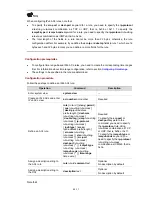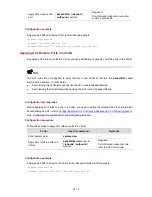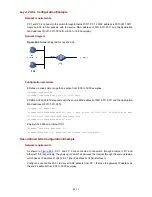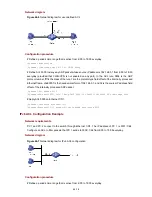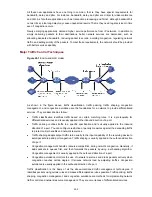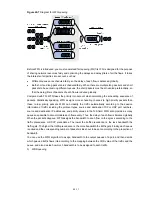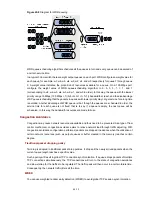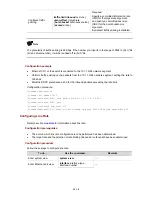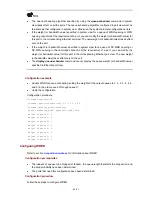
2) 802.1p
priority
802.1p priority lies in Layer 2 packet headers and is applicable to occasions where the Layer 3 packet
header does not need analysis but QoS must be assured at Layer 2.
Figure 45-3
An Ethernet frame with an 802.1Q tag header
Length/Type
Data
6 bytes
6 bytes
4 bytes
2 bytes
46 to 1500 bytes
4 bytes
TPID
TCI
Source
Address
Destination
Address
802.1Q
header
FCS
(CRC
-
32)
own in the figure above, the 4-byte 802.1Q tag header consists of the tag protocol identifier (TPID,
As sh
two bytes in length), whose value is 0x8100, and the tag control information (TCI, two bytes in length).
Figure 45-4
describes the detailed contents of an 802.1Q tag header.
Figure 45-4
802.1Q tag headers
In the figure above, the priority field (three bits in length) in TCI is 802.1p priority (also known as CoS
precedence), which ranges from 0 to 7.
Table 45-4
Description on 802.1p
y
priorit
802.1p priority (decimal)
802.1p priority (binary)
Description
0 000
best-effort
1 001
background
2 010
spare
3 011
excellent-effort
4 100
controlled-load
5 101
video
6 110
voice
7 111
network-management
The precedence is called 802.1p priority becau
defined in detail in the 802.1p specifications.
se the related applications of this precedence are
e of the eight hardware output queues. Packets with the highest
eferentially. As local precedence is used only for internal queuing, a
g the queue.
3) Local
precedence
Local precedence is a locally significant precedence that the device assigns to a packet. A local
precedence value corresponds to on
local precedence are processed pr
packet does not carry it after leavin
45-6

